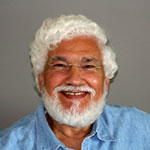January 27, 2013
Post-revolution Egypt: India as a model, Part 1/3
In the 1950s as a young boy growing up in Egypt I admired the leadership of Nehru of India and Nasser of Egypt. Both men were instrumental in building up their countries after years of British occupation and exploitation.
Africans and Arabs looked up to Nasser as one of them; a national progressive leader to emulate and the same goes for Nehru as many Asian countries were then still suffering under occupation or were destroyed because of Western baked civil wars.
The two leaders were hated by European imperial powers of the day. But Nasser had one more influential enemy, Zionist Israel. In 1956, Israel along with France and Britain invaded Egypt and occupied Sinai and the Suez Canal only two years after the British had ended their occupation of the country and eight years after the Zionist Jews took over by force the land of Palestine from its natives.
Now I believe it is time for post-revolution Egypt to look up to India and study its progress in economical development, achieving good level of press freedom and human rights, becoming the world’s largest democracy and achieving a high level of religious tolerance and social justice.
I was an eyewitness to the progress made by India during my recent visit to Pune (Poona) attending a microchip design conference. The city has a large student population and a large number of high quality academic and research institutes including nine universities. The University of Pune is India’s largest centre for Japanese learning.
Today Pune with its five million people has the seventh largest metropolitan economy and the sixth highest per capita income in the country. The city is competing with Bangalore to the south as a prominent base for the IT and the knowledge-based industries and becoming one of India's fastest growing business centres, with booming software and microchip design houses, back-office and call-centre sectors employing hundreds of thousands of young people.
It is named India’s Detroit as the automotive manufacturing sector is prominent here. Pune is also home to India’s Automotive Research Association. All sectors of the automotive industry, both Indian and foreign are located here for the manufacturing of all types of the popular two-wheelers, cars, tractors and trucks. India’s giant Tata’s Motors along with Mercedes Benz, Volkswagen and others have set shops here.
The city’s signs of prosperity include my 5-star two-year old well designed hotel I stayed at, multi-storey executive apartment blocks, gated estates, cappuccino bars, air-conditioned malls and fashion stores. All these were built not too far from traditional eastern bazaars, day markets and street venders.
Islam is the second largest religion in Pune and I visited its Jama Masjid at the city centre where is the Muslim area with its many markets, shops and restaurants is located. Pune's city centre is bordered to the north by the River Mula and to the west by the River Mutha – the two join in the northwest to form the Mutha-Mula, at Sangam Bridge. The principal shopping area, and the greatest concentration of restaurants and hotels, is in the streets south of the railway station.
Pune was the capital of the Marathas' sovereign state in the sixteenth century. The old Peshwa part of town, by far the most interesting to explore, is towards the west between the fortified Shaniwarwada Palace and fascinating Raja Dinkar Kelkar Museum; old wooden wadas – palatial city homes – survive on these narrow, busy streets, and the Victorian, circular Mahatma Phule Market is always a hive of activity.
Pune was chosen by the British in 1820 as an alternative headquarters for the Bombay Presidency.
The city was made known in the West in the 1970s when the Indian new age guru Bhagwan Rajneesh, or Osho (1931–90) founded his ashram in Pune. He preached individual devotion and sexual freedom while amassing vast personal wealth. By the early 1970s he had attracted 200,000 devotees, many from Europe and the U.S. He lived with a community of followers in Oregon, U.S. from 1981 to 1985, when he was deported for immigration fraud. He spent his last years in Pune, where he re-established his ashram.
The biggest challenge facing the city today is air pollution.
Pune was once known for its clean air relative to its sister to the West the mega city of Mumbai. But today car contribution to air pollution is a stunningly high at 40% and is rising. With 7000 new vehicles on the road each month since 2002 and with the increase in the number by fourfold in the past 10 years Pune’s clean air trade mark relative to Mumbai has long been gone.








